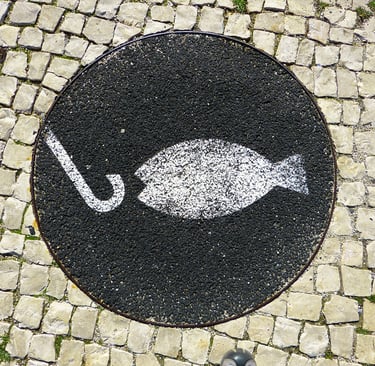Are You Using the Wrong Hook? Learn What Really Grabs Attention
Discover 8 powerful hook types that captivate your audience and boost engagement. Learn how to craft the perfect opening for blog posts, social media, and videos.
Abir Al Jaman
3/8/20252 min read


When it comes to creating engaging content, many focus on high-quality visuals, long-form storytelling, or the perfect hashtags. However, none of that matters if your audience isn’t hooked from the start. A strong hook is what makes people stop scrolling, click, and stay engaged.
Are you using the right one? Let’s explore different types of hooks and how to use them effectively.
1. Question Hook
A question hook sparks curiosity and encourages the reader to think about the answer, making them more likely to continue reading.
Example:
“Have you ever wondered why some people grow their social media accounts effortlessly while others struggle?”
This type of hook works well for blog posts, YouTube videos, and Twitter threads. It entices readers to find out the answer.
2. Statistic Hook
Shocking or surprising statistics can instantly grab attention, especially when they reveal something unexpected.
Example:
“Did you know that 80% of businesses fail within the first five years? Here’s how to make sure yours isn’t one of them.”
This technique adds credibility and urgency, making it effective for educational content, business blogs, and marketing materials.
3. Story Hook
Storytelling is one of the most powerful ways to connect with an audience. A compelling personal story or anecdote can make your content more relatable.
Example:
“Three years ago, I was struggling to get even 100 followers on Instagram. Today, I have over 100K. Here’s what I did differently.”
This is perfect for personal blogs, social media posts, and brand storytelling.
4. Bold Statement Hook
Starting with a strong, even controversial statement can spark curiosity and encourage people to keep reading.
Example:
“Traditional dieting is a scam. Here’s why most weight-loss plans fail you.”
This method works well in opinion pieces, social media content, and persuasive articles.
5. Problem-Solution Hook
People love content that solves their problems. Start by presenting a problem, then hint at the solution.
Example:
“Struggling to write engaging captions? You’re not alone. Here are 10 caption templates that work every time.”
This hook is ideal for “how-to” content, blog posts, and YouTube tutorials.
6. Metaphor or Analogy Hook
A clever metaphor or analogy can make a topic more interesting and easier to understand.
Example:
“Building a brand is like planting a tree—you need patience, consistency, and the right environment to grow.”
This technique is great for creative writing, branding content, and educational posts.
7. Quotation Hook
Starting with a powerful quote can add credibility and inspiration to your content.
Example:
“As Steve Jobs once said, ‘The only way to do great work is to love what you do.’ Here’s how to find passion in your work.”
This hook works well for motivational content, business blogs, and thought leadership articles.
8. Challenge Hook
Daring your audience to take action or test themselves can make them feel engaged and personally involved.
Example:
“I challenge you to post on LinkedIn every day for 30 days. Here’s why it will change your career.”
This is great for interactive content, personal development blogs, and social media challenges.
Final Thoughts
The right hook depends on your audience and the message you want to convey. Whether you use a question, story, statistic, or bold statement, the key is to make your hook irresistible.
Which type of hook do you use the most? Let me know in the comments!